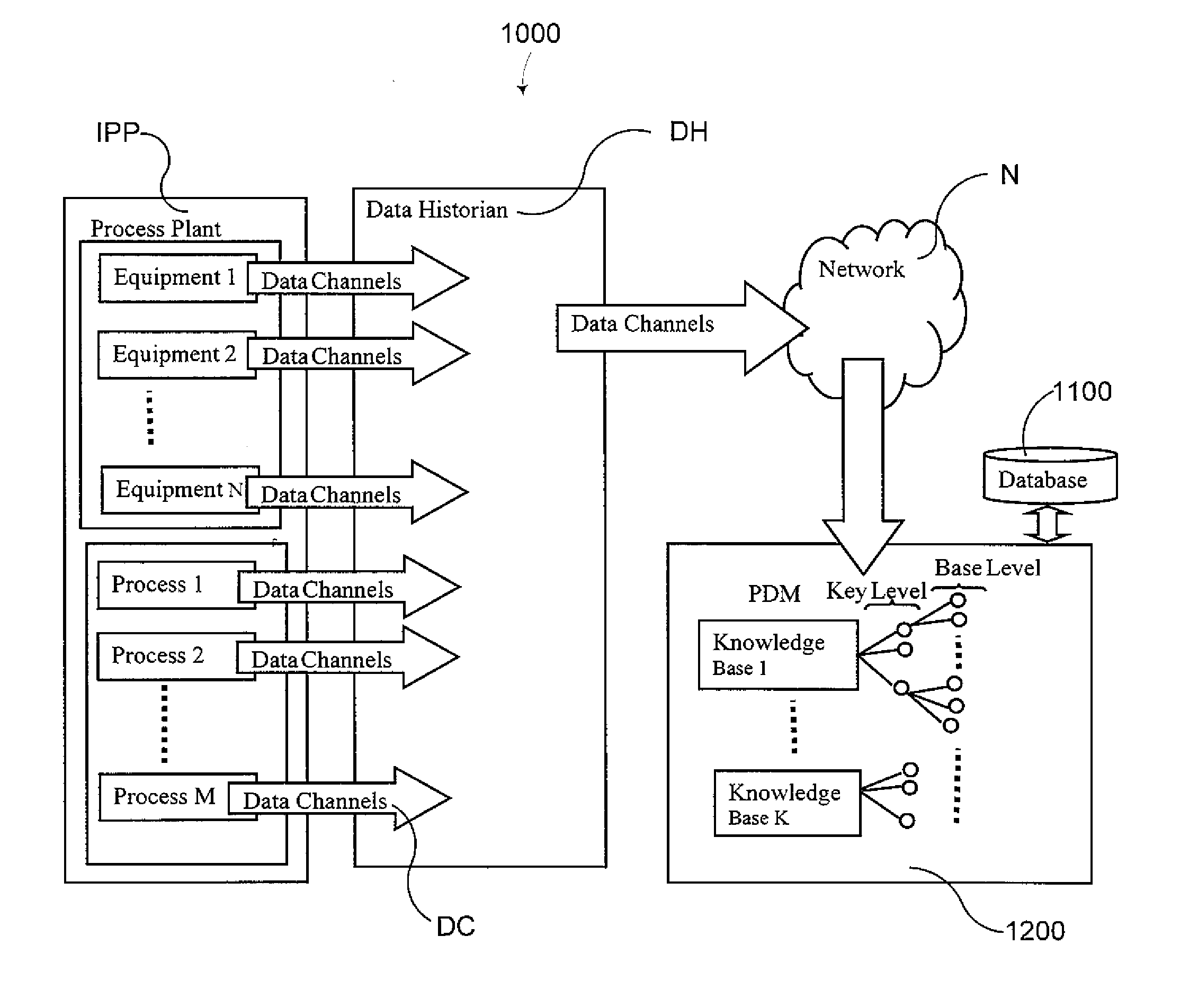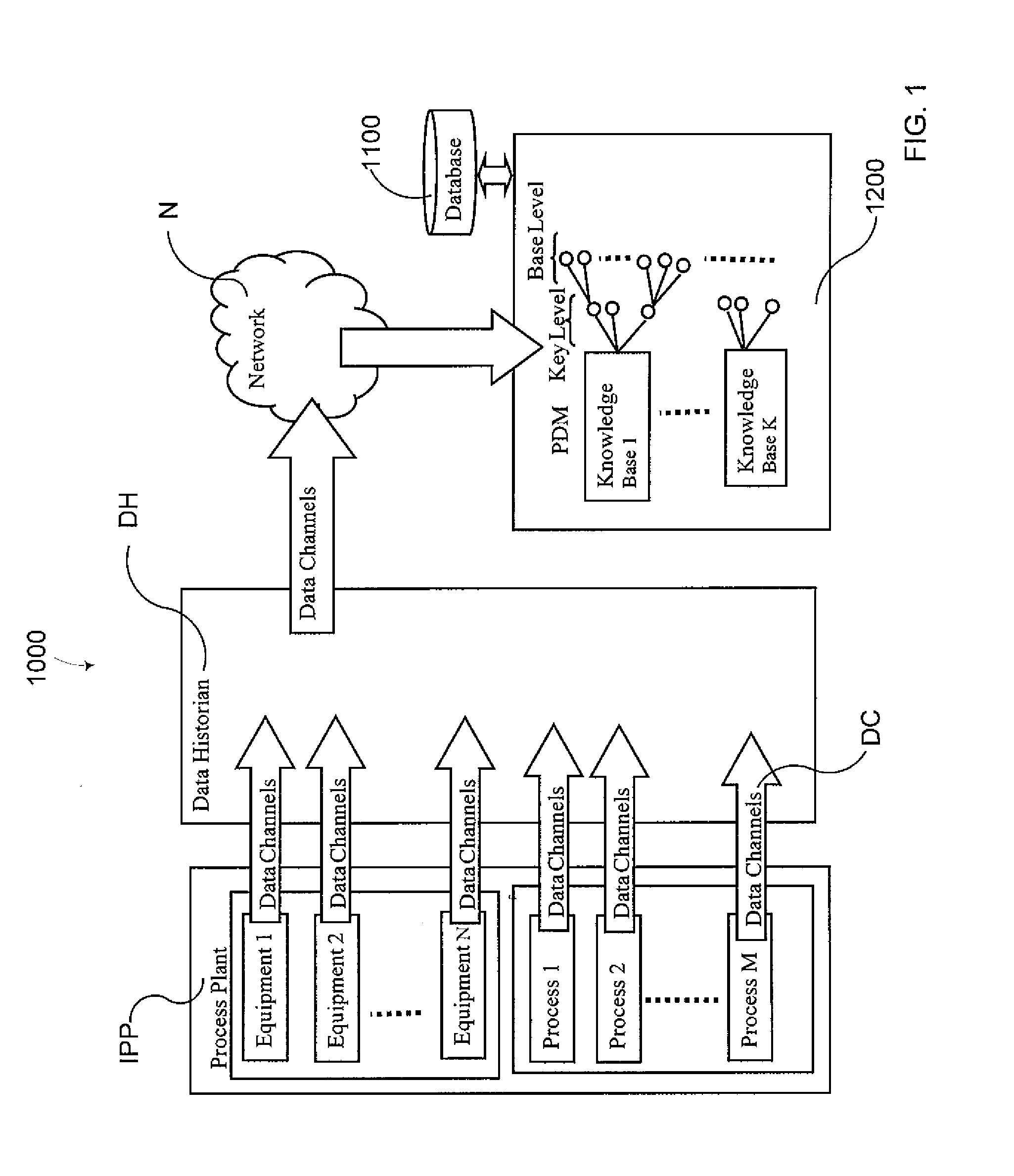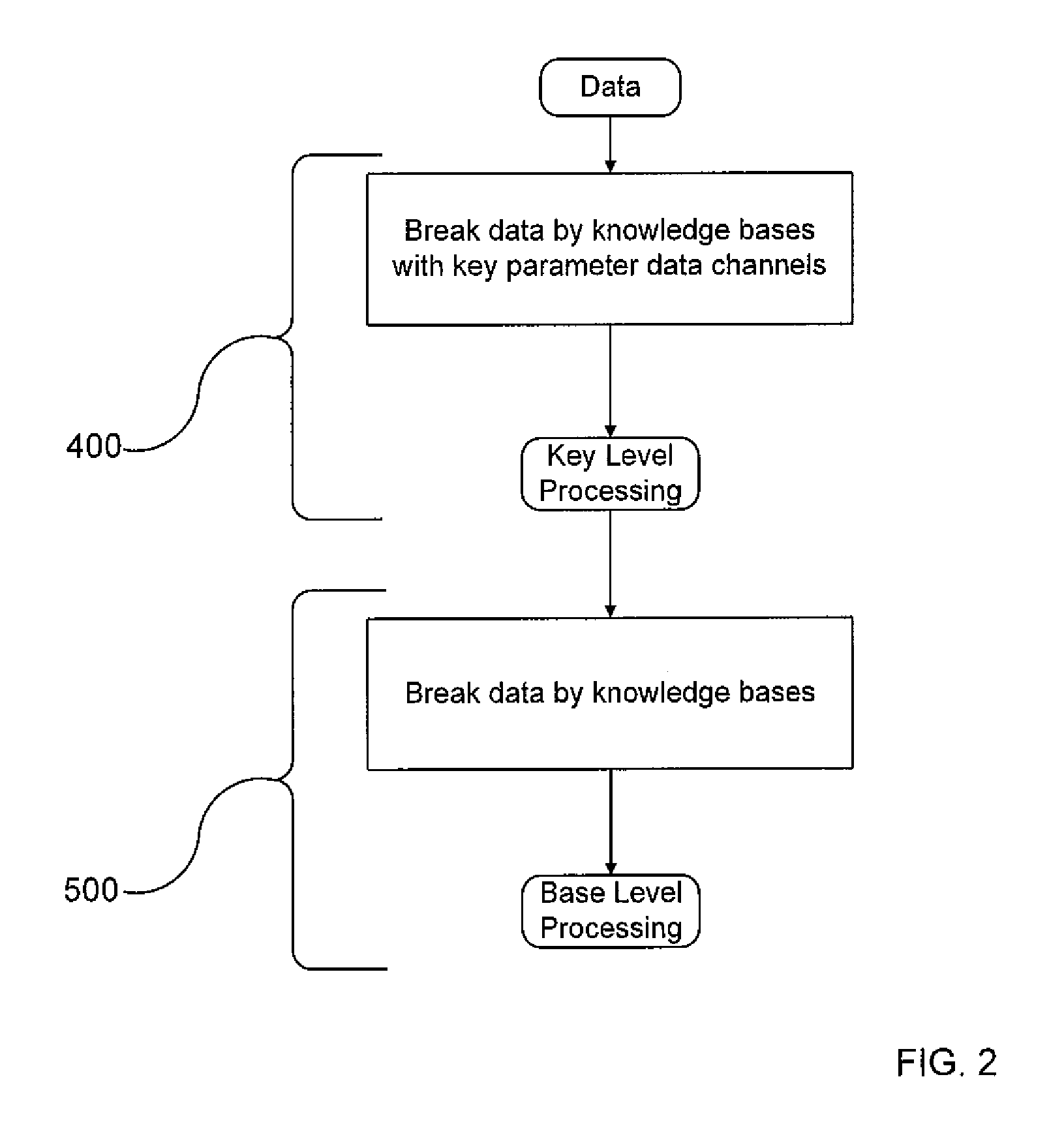Method for analyzing and classifying process data
a technology of process data and classification, applied in the field of monitoring industrial process plants, can solve the problems of increasing exponentially the complexity of such systems, observing inconsistent results, and usually computationally intensive, and achieve the effect of optimizing or fine-tuning data analysis
- Summary
- Abstract
- Description
- Claims
- Application Information
AI Technical Summary
Benefits of technology
Problems solved by technology
Method used
Image
Examples
Embodiment Construction
[0030]The present invention will now be described more fully in detail with reference to the accompanying drawings, in which the preferred embodiments of the invention are shown. This invention should not, however, be construed as limited to the embodiments set forth herein; rather, they are provided so that this disclosure will be complete and will fully convey the scope of the invention to those skilled in the art.
[0031]FIG. 1 is a block diagram of a Process Data Miner (PDM) system 1000, showing the topology of the software architecture, the objects that are present within the PDM software, and the inter-relations between these objects. The PDM system 1000 comprises a database 1100 and PDM software 1200, which includes a PDM algorithm. The database 1100 stores generic information about plant processes and equipment, such as a location of origin of a data channel, a tag accompanying a data channel, a value of data in a data channel, a timestamp received with the data channel, and a...
PUM
 Login to View More
Login to View More Abstract
Description
Claims
Application Information
 Login to View More
Login to View More - R&D
- Intellectual Property
- Life Sciences
- Materials
- Tech Scout
- Unparalleled Data Quality
- Higher Quality Content
- 60% Fewer Hallucinations
Browse by: Latest US Patents, China's latest patents, Technical Efficacy Thesaurus, Application Domain, Technology Topic, Popular Technical Reports.
© 2025 PatSnap. All rights reserved.Legal|Privacy policy|Modern Slavery Act Transparency Statement|Sitemap|About US| Contact US: help@patsnap.com



